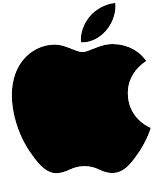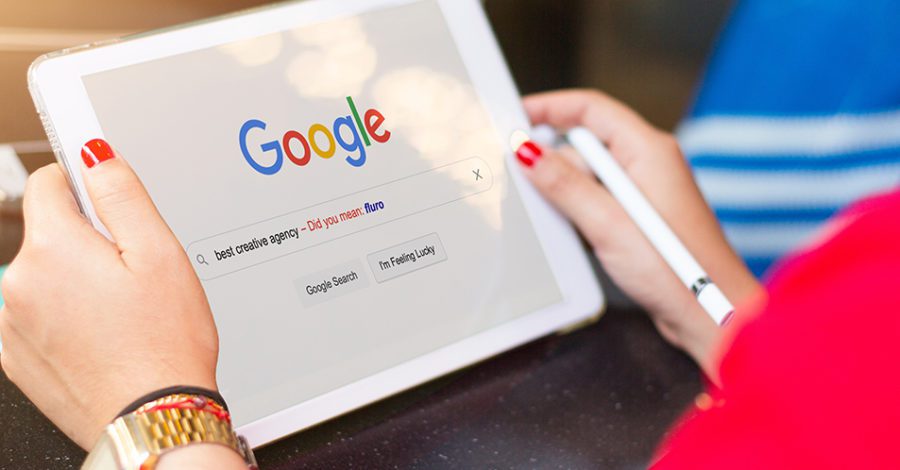What makes a good logo?
For many designers, creating a logo is the purest possible expression of the work we do. The logo is often the first point of contact for a consumer. It’s the distillation of your brand’s visual identity to its simplest form.
There’s an essential set of ingredients in the perfect logo. Let’s consider some of the most celebrated logos in the history of design to explain what they are. We’ll also throw a few of our own recently designed logos for good measure. They might not have a place in the international logo hall of fame yet, but they follow the same basic principles; simplicity, timelessness, and relevance.

Creating a Logo? Keep it Simple
The Apple logo has long been admired. Its popularity has steadily grown over the years for the elegant way it reflects the simple, intuitive nature of the company’s products.
Simplicity is a key ingredient for creating a strong logo because consumers usually only focus on a logo for a short period of time. A truly strong logo can capture the personality of a brand in the merest of glances.
Other examples of simple logo design include letter and word marks. These dispense with images altogether and communicate brand personality with fonts and colours. Overall, using as few elements as possible to communicate the brand’s personality is critical.
We have achieved just that with this logo. We breathed new life into the brand identity for Fresh, who create digital workspace solutions using the Microsoft product suite. Their new look is bold, modern and eminently simple.
![]()
We combined a wordmark alongside a simple square that incorporates the initial letter of the brand.
Iconic and Adaptable
We’ve looked at Apple, so how about the Big Apple? This iconic logo was designed by the legendary Milton Glaser. You won’t need telling that this logo is still used as often today as it has been in the past.

The logo first appeared in a television commercial in 1977 as part of a campaign for New York state. Apparently, Glaser sketched the logo on the back of an envelope on his way over to a meeting. He gave them the design for nothing, not believing it would ever amount too much.
Over the past 44 years, the logo has been adapted to celebrate many cities and countries across the world. It’s also been used for everything from science and gymnastics to chihuahuas.
It can be tempting to incorporate current design trends when creating a logo. But this epic example shows the value in creating something with a more timeless appeal. Think also of the golden arches of McDonald’s and Coca-Cola’s iconic wordmark which both remained unchanged for decades.
Timeless over Trend
A timeless logo draws strength from the core qualities of the brand. Rather than leaning on trend, it’s always better to be self-reliant when it comes to logo design. Timeless designs also tend to favour simple colours and textures over fussy gradients and extensive palettes.

Our own designer was looking for timeless appeal with this logo for Pure digital radios that helped this pioneering audio brand step into a new technological era. The icon represents a conch shell which is synonymous with sound. It also features a ‘P’ for Pure, making the logo identifiable even without the wordmark.
Remaining Relevant
As with any form of great marketing, the best logos are always relevant to the brand and the sector in which they belong. The much-loved Nike swoosh perfectly captures the movement and dynamism that is spot on for a sports fashion brand.

Bearing in mind the incredible impact this logo continues to have, it’s hard to believe it was created by a graphic design student in 1971 who was paid just $35 for her work. When Carolyn Davidson showed Nike co-founder, Phil Knight, the idea, he wasn’t too impressed. “I don’t love it,” he said. “But it will grow on me.”
The choice of colours can add to the relevance of your logo. A company that sells toys, for example, may well choose bright colours that communicate fun, and excitement, while a British brand would have good reason to opt for a bold red, white, and blue palette.
The font used in the logo or wordmark can add further relevance. Angular and thin fonts are ideal for a company that works in technology while a softer, more flowing font might work well for a perfume or other products targeted at women.

It’s not just the name that makes the Psixty branding relevant for a bold and innovative new recruitment start-up. Our designer’s clever use of negative space in the ‘p’ adds an extra layer of cleverness that is both simple and wholly appropriate to the company name.
Create an Identity
We’ll leave the last word in this brief discussion about logos to Paul Rand, the famous American designer from the 1950’s and 60’s who created, among others the IBM and the UPS logos: “A logo doesn’t sell (directly), it identifies.”
That’s true, of course, and yet time has taught us that, as the fingerprint for a brand, the best logos can certainly play a strong role in the selling process. Looking for a new logo? Get in touch with us today.
Let's start something
Want to talk to us about a project?
Just get in touch, we'd love to chat.
Send an email to hello@fluroltd.com
Ring on 01628 525 449
